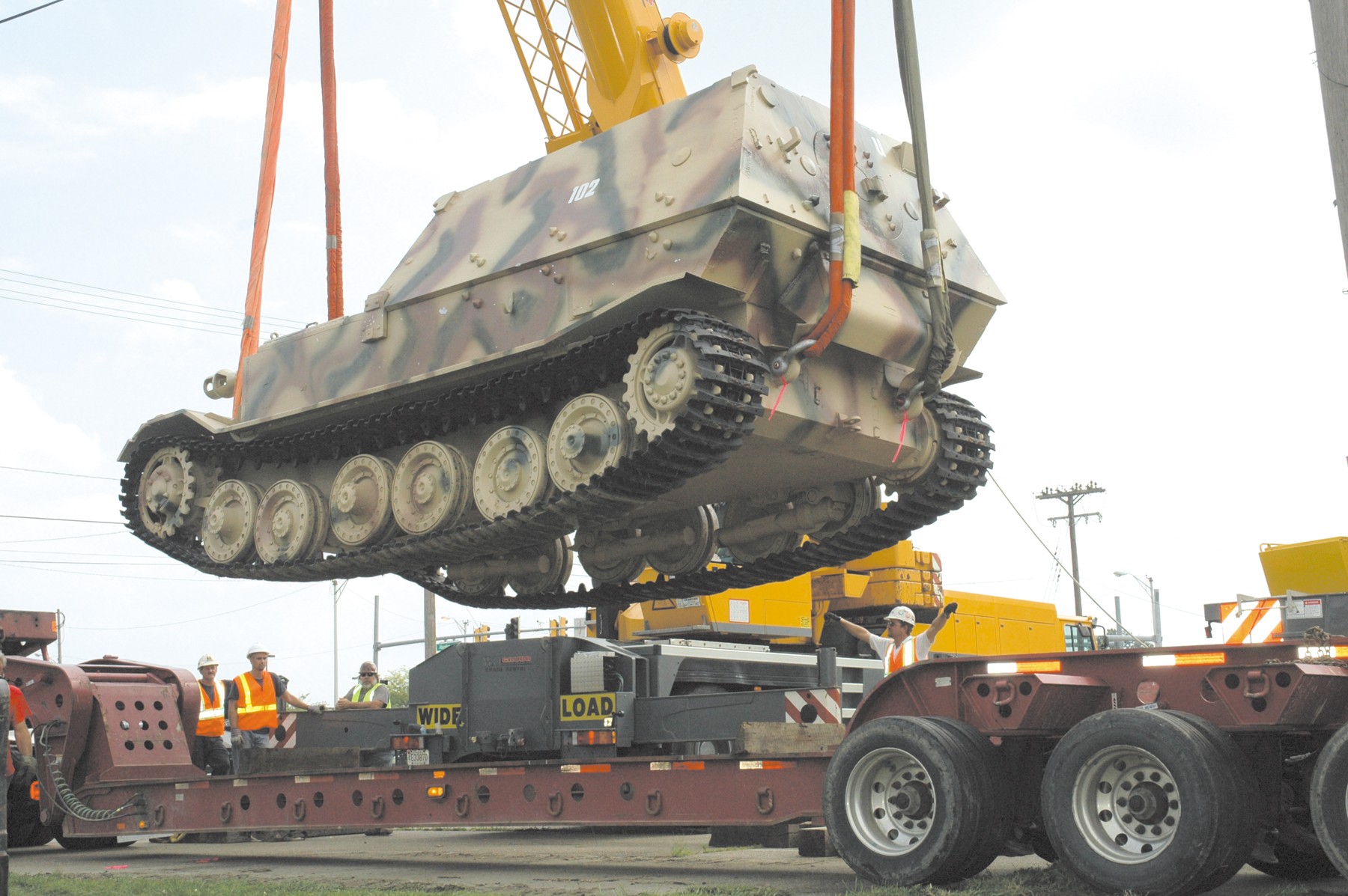The first phase of the historic relocation of the Ordnance Museum began with the shipment of 60 of the museum's large artifacts to Fort Lee, Va. Aug. 3 through 7. During that week the sight of giant cranes loading tanks and guns caught the attention of post employees and passers-by, many of whom pulled over to snap photos with their camera phones.
Activities on Aug. 5 captured the most attention during the loading of a World War II German Elefant tank. It took one 120-ton crane and one 90-ton crane from the Meadow Lark Transportation Company and the ingenuity of riggers from the A&A Transfer Inc. to load the 141,000-pound tank onto a multi-axle trailer. As it turned out, lifting the tank was the easy part. Riggers had to use two forklifts to shift the trailer into position under the tank as it hovered above. Trailer and cargo totaled about 250,000-pounds and required police escort the entire route.
Along with the APG News, a photographer from The AEGIS and Mike Brown, a videographer from the APG Garrison's Visual Information Services Division were on hand to film the event. Perhaps none were more interested in the goings on than a group of technicians from EDSI, Inc., the company contracted to restore the museum's aging artifacts.
The restorers, Richard Warner, Joe Wheeler, Leroy Sims and Anthony Beard watched the activities while sitting in the shade under a nearby tree.
"This is just historic," Warner said. "There are only two of these in existence; this one and one in Russia."
Wheeler said workers spent about 300 man hours restoring the tank. "It's a one-of-a-kind showpiece," he said proudly.
"It was in real rough shape," Simms added. "We just wanted to see it loaded. That's our baby."
Jerry Kendrick, EDSI project manager, said the restoration was the first of its kind for the company and a film crew from Toronto was on hand to film the operation for television.
"Time management was the issue," Kendrick said. "We normally average six to eight weeks on a project like that."
The film crew's schedule required a much shorter operation. They filmed the first two weeks of taking the tank apart and blasting off the old paint and rust and then said they would return in two weeks to film the repainting.
"We had five weeks, so that meant some extra hours," Kendrick said, adding that he received approval for the extra hours from his company prior to the project.
"It took almost two days just to paint the tracks, which weigh about three tons," he said, adding that much of the camouflage painting was done by hand.
"We only had a photo of what they wanted and that only showed one side view so there was a lot of guess work involved, but it turned out really nice." he said. "The film crew and the Ordnance Museum were happy with it."
Since 1999, EDSI workers have restored more than 160 Ordnance tanks and guns, many of which were crumbling and had to be rebuilt from the inside out.
In that time they've also done work for other organizations. Four items they worked on for the U.S. Marine Corps are on display at the Marine Corps Museum in Quantico, Va. They include a Sherman Tank and a World War II landing craft. In addition, they restored a HUEY helicopter now on display at Carlisle Barracks, Pa.
Kendrick said that the restoration of ordnance artifacts will continue despite the museums' relocation.
"The operation will continue at APG. Some will go to the Ordnance Center and Schools when they're completed and some will stay here," he said.
Although he was unable to attend the loading of the Elefant tank, he said he was glad his workers got to see it.
"It was a one-of-a-kind tank," he said. "We'll probably never see another one like it."




Social Sharing